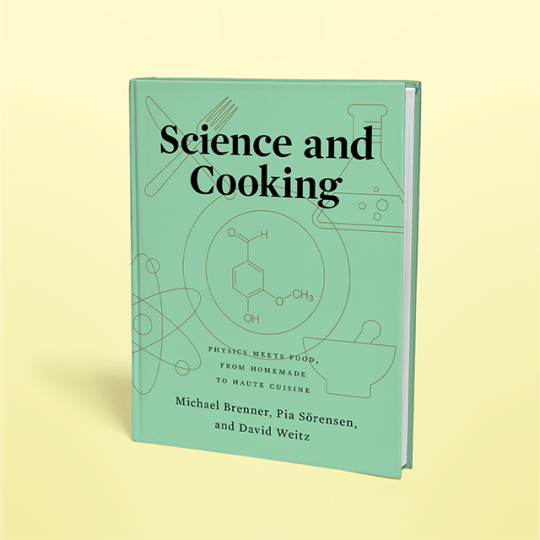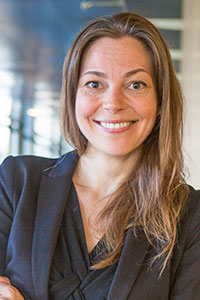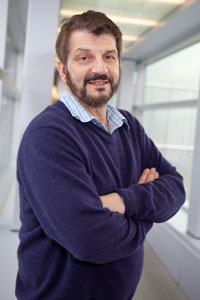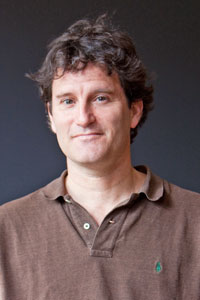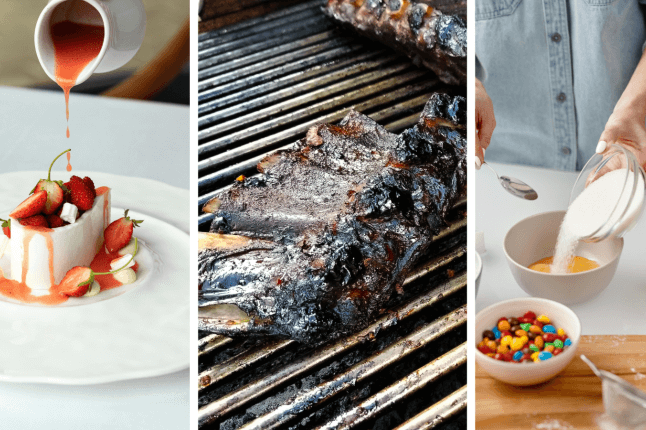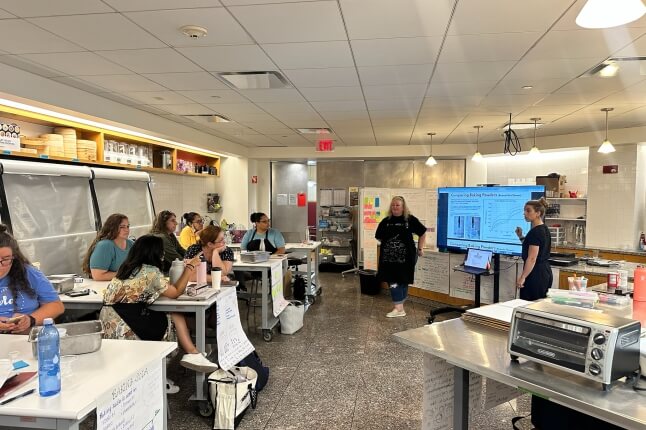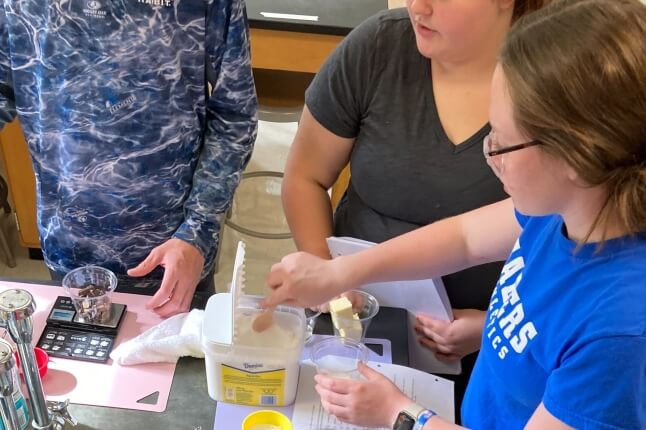News
What could be more delicious than a chocolate chip cookie, still soft and warm after being pulled straight from the oven?
It’s a safe bet that most people have eaten a chocolate chip cookie (7 billion are consumed in the U.S. alone each year, according to Yankee Magazine). But how many people stop to think about the invisible yet indispensable principles of physics and chemistry that spring into action to turn those pale balls of dough into golden brown goodness?
Curious home cooks, world class chefs, and everyone in between can find answers to the questions of why recipes work within the pages of the new book “Science and Cooking: Physics Meets Food, from Homemade for Haute Cuisine,” based on the perennially popular Harvard College course.
The book, authored by Michael P. Brenner, Michael F. Cronin Professor of Applied Mathematics and Applied Physics, Pia Sörensen, Senior Preceptor in Chemical Engineering and Applied Materials, and David Weitz, Mallinckrodt Professor of Physics & Applied Physics, was more than five years in the making. It is a culmination and celebration of the course, launched 10 years ago as a tantalizing way to pique students’ interest in principles of materials science and applied physics.
The undergraduate course has since spawned a massively popular public lecture series, where celebrated chefs demonstrate scientific and culinary techniques for a live audience (though the series was held virtually this year), and two online edX courses (part one and part two) that bring Science and Cooking to a global audience.
“The book is a way to put it all together. It is modeled after the underlying idea of the class, which is that recipes are not just random things. They work because there is underlying science,” said Sörensen. “By understanding that underlying science, not only can we understand something about the food we eat, but also something about the science itself. It is a fantastic way to draw people in and inspire them and make them curious.”
Feeding curiosity is the aim of the book, which breaks its chapters down not by meals or ingredients, but by the scientific principles at work. For instance, in the diffusion chapter, recipes include molten chocolate cake, sous vide suckling pig, and fried ice cream.
Alongside these recipes are equations, diagrams, images, and detailed explanations that explore and expound the scientific principle of diffusion in detail. Diffusion is the movement of molecules from a region of higher concentration to a region of lower concentration. For instance, lemon ions move through raw fish when one makes ceviche, changing the food’s color, texture, and flavor.
Many of the recipes in the book were contributed by the world-class chefs who have been featured presenters in the Harvard course over the past decade. For example, following the ceviche recipe is one for Kinilaw (a Filipino raw fish dish that relies on vinegar and diffusion to do the ‘cooking’) provided by Margarita Forés, chef/owner of Cibo Restaurants in Manila and winner of ‘Asia’s Best Female Chef’ in 2016.
Other recipe contributors include Ferran Adrià, the world-renowned chef at Spain’s El Bulli, Bill Yosses, former White House executive pastry chef, and Joan Roca, chef at the El Cellar de Can Roca, which was twice named best restaurant in the world.
But despite the big names, the book is approachable for cooks of every skill level, Sörensen said.
Her favorite chapter is the final one, which is all about cooking with microbes.
“One of my favorite recipes is the sauerkraut lab because it is so simple. There are two ingredients: cabbage and salt. And then the third ingredient is time—you just wait,” she said. “It is something many people haven’t done and it is so easy, but it completely transforms the food. It completely changes the texture and the flavor, and it is all done by these microbial cooks.”
This is a cookbook that is meant to be used. The authors want readers to try their hands at making sauerkraut, or bake a batch of Cornflake Chocolate Chip Marshmallow Cookies (a novel cookie variant invented by Milk Bar chef Christina Tosi that incorporates much more fat).
Ultimately, Sörensen hopes the book makes readers’ experiences in the kitchen as scrumptious and stimulating as the Science and Cooking course has been for the past decade.
“When you are cooking in your kitchen, you are basically being a scientist trying out an experiment,” she said. “We often study science on such a detailed level, but there is this wonder in realizing that it is everywhere around us.”
Topics: Cooking
Cutting-edge science delivered direct to your inbox.
Join the Harvard SEAS mailing list.
Scientist Profiles
Pia Sorensen
Senior Preceptor in Chemical Engineering and Applied Materials
David A. Weitz
Mallinckrodt Professor of Physics and of Applied Physics
Michael P. Brenner
Catalyst Professor of Applied Mathematics and Applied Physics and of Physics
Press Contact
Adam Zewe | 617-496-5878 | azewe@seas.harvard.edu
